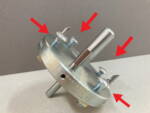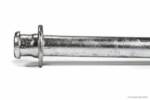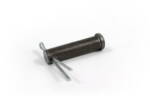Dan's FAQs
Fully threaded rods can be supplied by several different manufacturing methods depending on the job’s requirements. What is all thread rod? All thread rod is a piece of steel round bar that is threaded across its entire length. They are used for a wide variety of purposes, from through bolts to concrete anchors. It might... Read more

In short, yes. The grooving tool for installing split rings and the dapping tool for installing shear plates allow the depth of the cut to be adjusted. Both tools have either two or four carriage bolts that set the depth of the groove cut into the wood. The headed ends of the bolts project from... Read more

When Portland Bolt calculates the length of the rods in a tie rod using the pin-to-pin length of the assembly, we assume that the rods will be threaded into the clevises the full length of the female threaded nut component (Dimension ‘N’ in the drawing below) plus an additional length equal to ½” or half... Read more

The SAE J429 Grade 5 specification used to share the same head marking requirement as ASTM A449. A449 and Grade 5 are virtually identical both chemically and mechanically, but where the Grade 5 specification stops at 1-1/2” diameter, A449 continues up to 3”. They shared the three radial line head marking that Grade 5 still... Read more

Portland Bolt manufactures both median barrier connecting pins and base stabilization pins for precast barriers used in many different states throughout the country. Although most states use a unique design for their pins, we have worked with several Departments of Transportation to approve our unique barrier pin. We designed the head of the pin to be... Read more

Yes! Typically, we prefer that overseas customers arrange their own freight, but we have the resources to handle the shipping process for you. We can ship to an airport where your company or a freight forwarder will transport the bolts to their destination, or we can arrange a door-to-door shipment. What goes into arranging your... Read more

A tie rod assembly, used to brace steel columns, large timbers or canopies, often comes with clevises which are attached to mounting plates by a pin. These pins typically come in three configurations: headed pins with cotters, straight pins with cotters, and A325 structural bolts with a nut. Headed or ‘vertical’ pins possess a small... Read more

